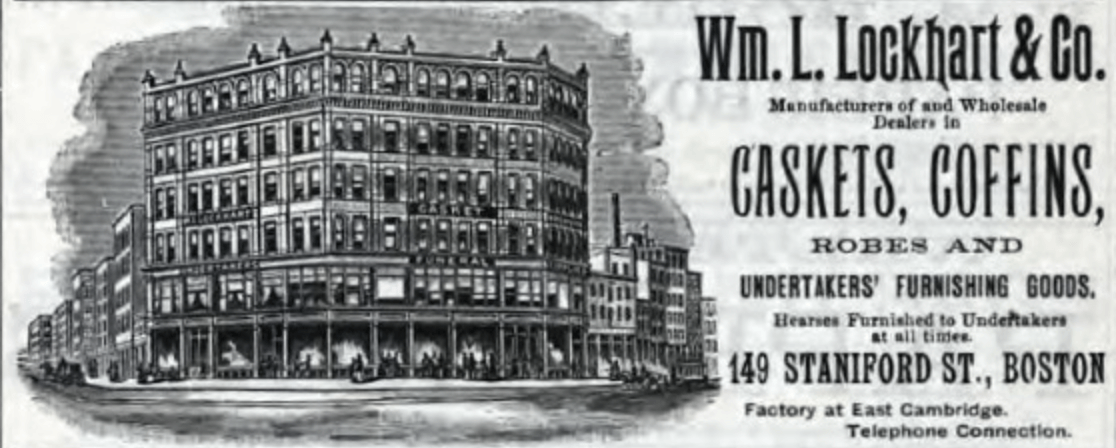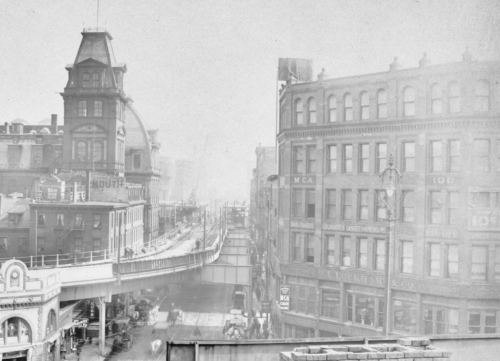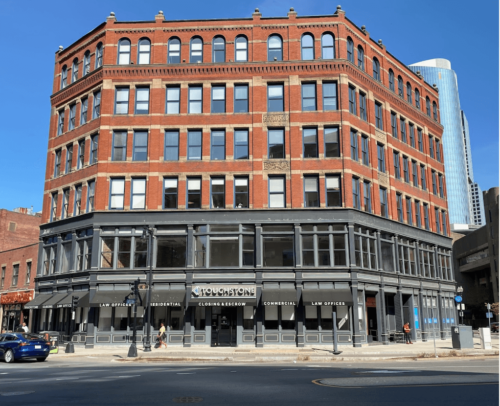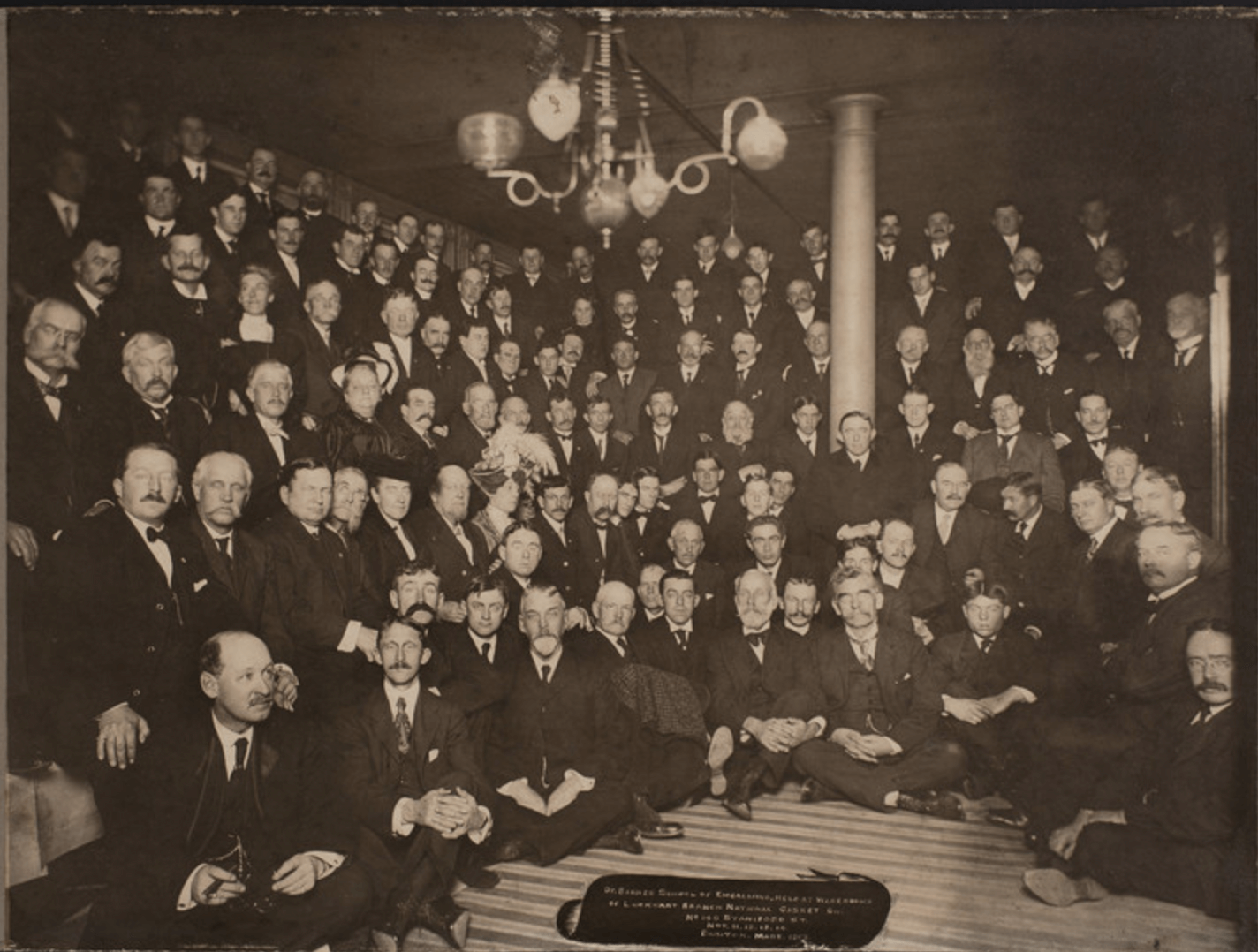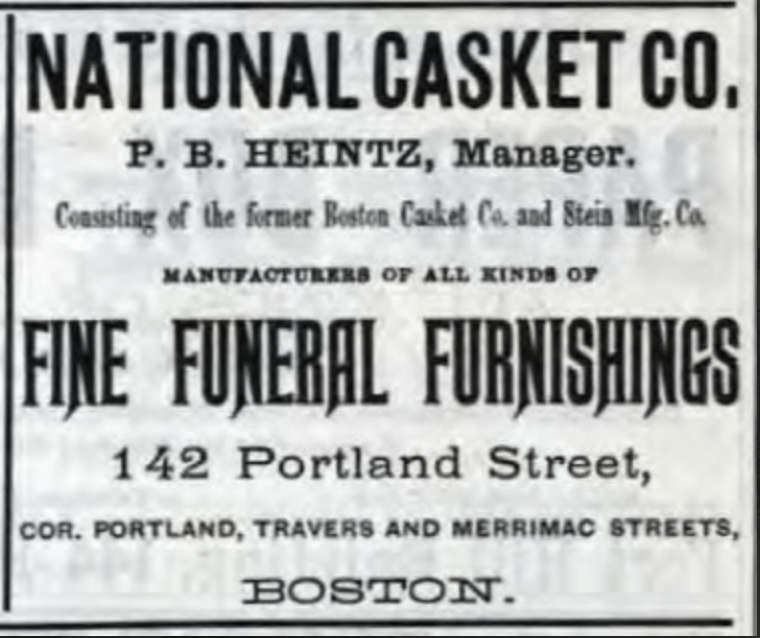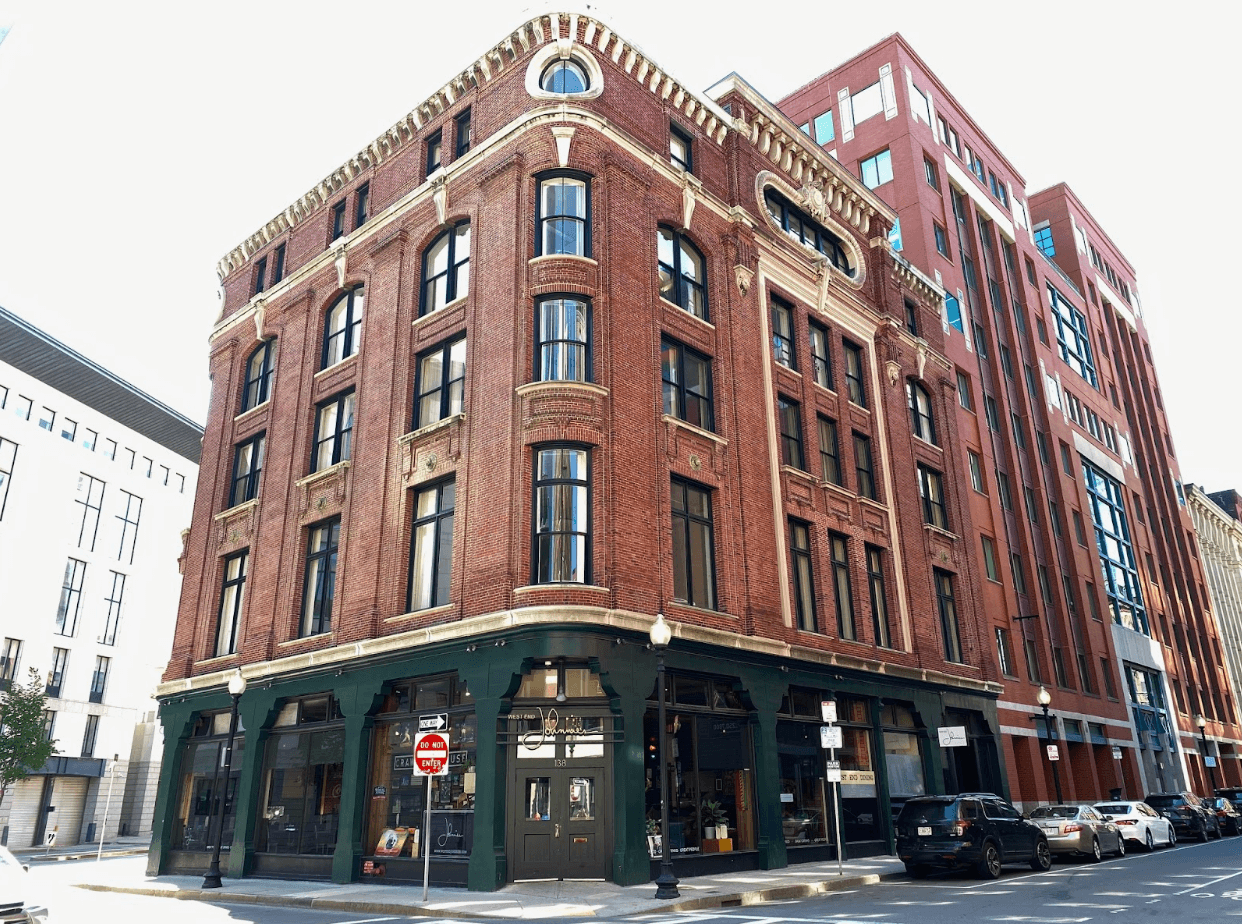The Casket Industry in the West End
Throughout its history the West End has hosted the regional and national headquarters of many industry leaders, from shoes, to biscuits, and even caskets.
The West End’s favorable setting between Boston’s economic center and its major transportation hub has made it a desirable destination for the main offices and sales outlets of many commercial enterprises. Though some businesses sprung up from within the West End itself, just as many moved into the neighborhood from afar to take advantage of this prime location. In the case of the country’s coffin industry, two of its main players came to settle in the Bulfinch Triangle from outside the city; one from just across the river and the other from out of state.
In 1887, William L. Lockhart purchased land at 151 Merrimac Street, at the intersection of Causeway and Staniford Streets, from Thomas Wigglesworth, son of an East India merchant. On this lot he built a splendid six-story, sandstone, Richardsonian Romanesque commercial building, designed by Boston architect Frederick Nason Footman (1849-1898), and still standing in Lowell Square today. It was here that Lockhart would place the headquarters, showroom, and warehouse of Wm. L. Lockhart & Company; the New England region’s largest manufacturer of coffins and mortuary supplies.
After learning the trade of casket making from John Peak, William Lockhart founded the company with his father, David Lockhart, in 1854 just across the Charles River in East Cambridge. From their plant on Bridge Street, the Lockhart’s employed over 125 workers who produced “fine coffins and caskets, also robes and linings of all kinds and undertakers’ supplies generally.” Eventually the enterprise expanded “throughout the United States, Canada and portions of South America.” One of the company’s premier products was the Lockhart patented casket let “down upon the sides and ends, giving the appearance of a sofa, when so arranged, thereby relieving the sombreness, the box-like appearance of the ordinary casket.”
Each floor of the Lockhart building was divided into departments offering “complete lines of robes, casket linings of all qualities, samples of all the leading varieties of casket handles, shrine plates, thumb screws, society emblems, candelabras, Lockhart’s embalming board and instruments, [and] undertakers’ memorandum books.” From this location the Lockhart’s also garaged 36 hearses which could be leased to local funeral directors, relieving them of the capital expense of purchasing their own vehicles which at the time cost between $50,000 to $150,000 in today’s dollars. W.L. Lockhart also offered other services for morticians, including a four-day course for morticians conducted in its warehouse by Dr. Barnes School of Embalming.
By the time Dr. Barnes conducted his course, the Lockhart’s had already sold their business to the National Casket Company of Oneida, New York, the fastest growing casket manufacturer in the country. National Casket moved to the West End in 1896 as part of its national expansion, and was the first principal occupant of the Tarbell building located at 138-142 Portland Street (85 Merrimac Street today). The Tarbell building, which still stands proudly, was designed by Stephen Codman in the Beaux-Arts style and is noticeable for its “oxeye windows at the rounded corner bays.” Codman designed other commercial buildings in the Bulfinch Triangle (105-119 Merrimac and 166-174 Portland) and throughout the rest of the city.
The Tarbell building continued to serve as the principal New England sales office for National Casket, even after its regional executive offices later moved to 3 Park Street, Boston in 1919. In 1922, P.B. Heintz who served as the manager at 142 Portland Street for over twenty years became the president of National Casket and moved the company’s national headquarters to Boston. With Heintz at its helm, National Casket would become the largest casket manufacturer in the United States for over fifty years. Its sales offices would remain at the Portland Street location until 1927, and the Lockhart subsidiary sat in the Lockhart Building until 1930. National Casket maintained its national executive offices in Boston until its acquisition in 1969 by the Waco National company of New York.
Article by Bob Potenza, edited by Sebastian Belfanti
Sources: Boston Directory, 1898.; “Building Information Form (134-143 Portland Street)”.Boston Landmarks Commission, 1985.; Cambridge Chronicle, September 9,1905, p. 26.; “Elegant Caskets and Robes: Opening of W. L. Lockhart’s”. Boston Daily Globe (1872-1922); Feb 9, 1888; ProQuest Historical Newspapers: The Boston Globe, pg. 4.; https://archive.org/; “National Register of Historic Places Inventory—Nomination Form (138-142 Portland Street).” United States Department of the Interior, National Park Service, 1985.


